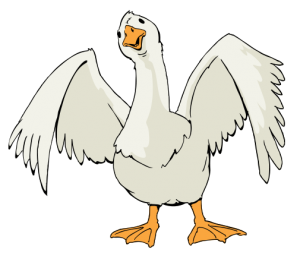
The history and original term Mother Goose most likely comes from the 1600’s that goes along with the time when there were big witch hunts. People usually come in contact with this rhyme when teaching and entertaining very young kids. An old picture of Mother Goose is an old witch, or crone, that is seen flying while on a goose. The crone usually didn’t have a man to help defend her with an incrimination of doing witchcraft. Witches, therefore, are also grouped with living and being alone in a house in the woods. The goose takes the place of the usual broomstick that the witch flies on. The beginning words of the nursery rhyme Cackle Cackle Mother Goose indicate a witch, because in most cases when witches are brought up they do a lot cackling.
The history of the word cackle can also be related to the original way a goose would talk. The term Mother Goose and the oldest use of the term comes from the French critic known as Jean Loret. This happened to be in the year 1650. In the year 1697, Charles Perrault made a collection of stories that were under the name Tales of Mother Goose. However, none of the rhymes that are usually grouped with Mother goose were involved. The very first that is most likely associated with the name was a woman named Elizabeth Foster Goose. She lived from 1665 to 1758. However, there is not a sure record that they had a solid association with the making of the nursery rhymes. It has been stated that in 1860 a group of Mother Goose nursery rhymes were made in Boston. This was made by Thomas Fleet. On the title page of the nursery rhyme there was a picture of a goose and it had an incredibly long neck and its mouth was open. Thomas Fleet labeled this book in his printing house that was in Pudding Lane. This all happened in 1719. Thomas Fleet married Elizabeth Goose and it is stated that he used his wife’s name to come up with the term Mother Goose. Isaiah Thomas was the man who first published an authorized version of Mother Goose’s Melody.